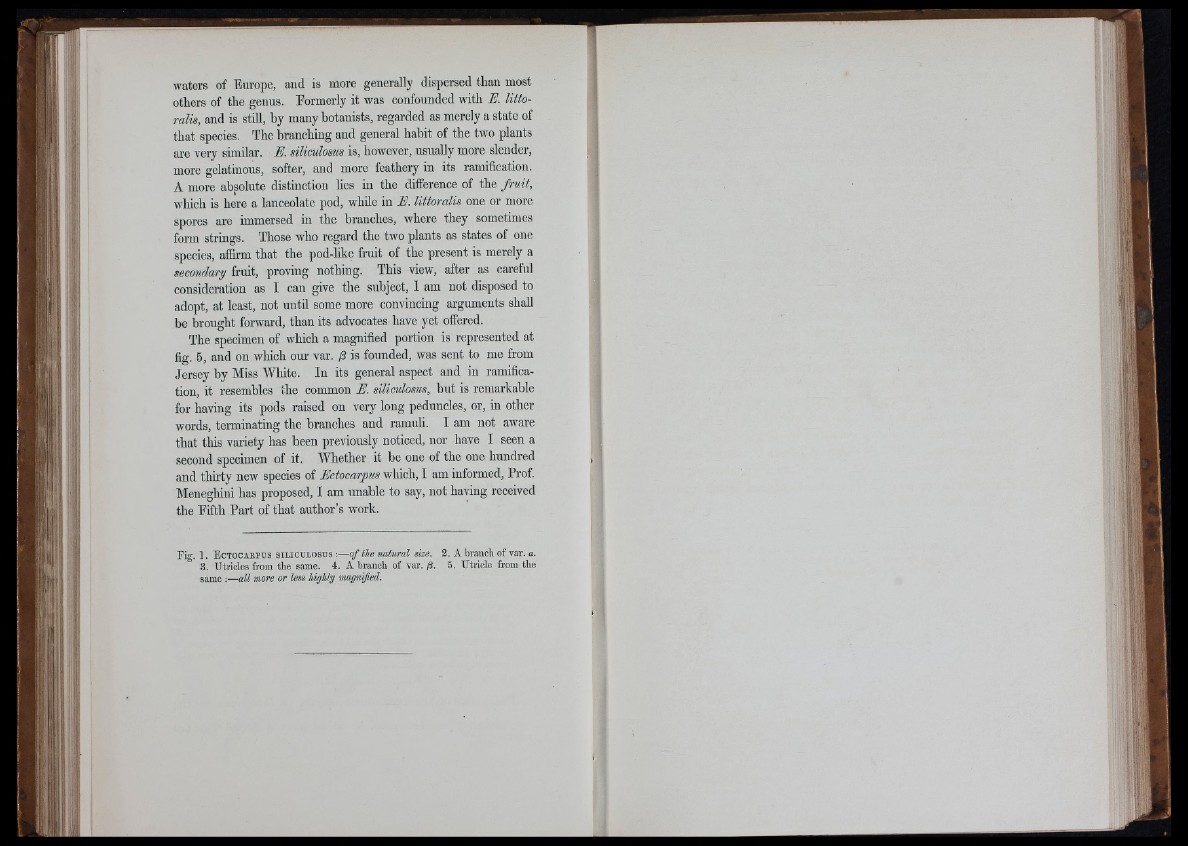
waters of Europe, and is more generally dispersed than most
others of the genus. Formerly it was confounded with E. litto-
ralis, and is still, by many botanists, regarded as merely a state of
that species. The branching and general habit of the two plants
are very similar. E. siliculosus is, however, usually more slender,
more gelatinous, softer, and more feathery in its ramification.
A more absolute distinction lies in the difierence of the fruit,
which is here a lanceolate pod, while in E. littoralis one or more
spores are immersed in the branches, where they sometimes
form strings. Those who regard the two plants as states of one
species, affirm that the pod-like fruit of the present is merely a
secondary fruit, proving nothing. This view, after as careful
consideration as I can give the subject, 1 am not disposed to
adopt, at least, not until some more convincing arguments shall
be brought forward, than its advocates have yet offered.
The specimen of which a magnified portion is represented at
fig. 6, and on which our var. /3 is founded, was sent to me from
Jersey by Miss White. In its general aspect and in ramification,
it resembles the common E. siliculosus, but is remarkable
for having its pods raised on very long peduncles, or, in other
words, terminating the branches and ramuli. I am not aware
that this variety has been previously noticed, nor have I seen a
second specimen of it. Whether it be one of the one hundred
and thirty new species of Ectocarpus which, I am informed, Prof.
Meneghini has proposed, I am unable to say, not having received
the Pifth Part of that author’s work.
Fig. 1. E ctooa bpus SILICULOSUS:— o f the natural size. 3. A branch of var. a.
3. Utricles from the same. 4. A branch of var. ¡3. 5. Utricle from the
same :— all more or U